Sepidehmaleki/iStock
One of the many benefits of growing plants, especially flowers, is how versatile they are in their presentations. You can grow flowers in a gorgeous field or meadow, a neat garden bed, a romantic rose garden, or a container on your patio — the options are endless. But one of the most beautiful ways to display flowers, though, is in a hanging basket. While regular flowers look great and add a pop of color to your porch, trailing flowers look especially stunning climbing down from a high-hung basket.
The best thing about growing flowers in baskets is mixing and matching them, creating attractive multicolored or multi-textured combinations. There are a few things to keep in mind before starting your own hanging basket flower display, though. As Ambius points out, some of those factors include the type of material, liners, and size of the basket to use. What is most important, though, is the flowers you choose to put inside.
1. Black-eyed Susan
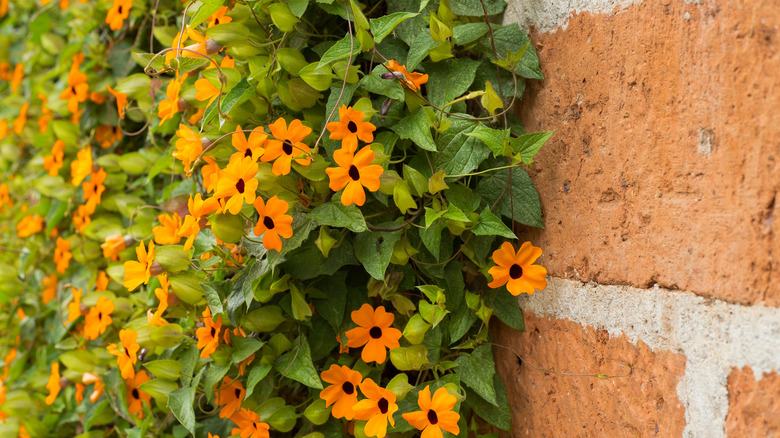
One of the most popular trailing or vining flowers is black-eyed Susans (Thunbergia alata). According to Wisconsin Horticulture, these are popularly grown as annuals but are quite hardy in USDA zones 9 and 10. The flowers are orange or yellow and grow alongside heart-shaped leaves.
They can trail when planted in a basket or on trellises and other supports. As annuals, black-eyed Susans grow anywhere from 3 to 5 feet long and prefer full sun and fertile, moist soil. Fertilize every few weeks for the best blooms in the summer through fall.
2. Trailing lobelia
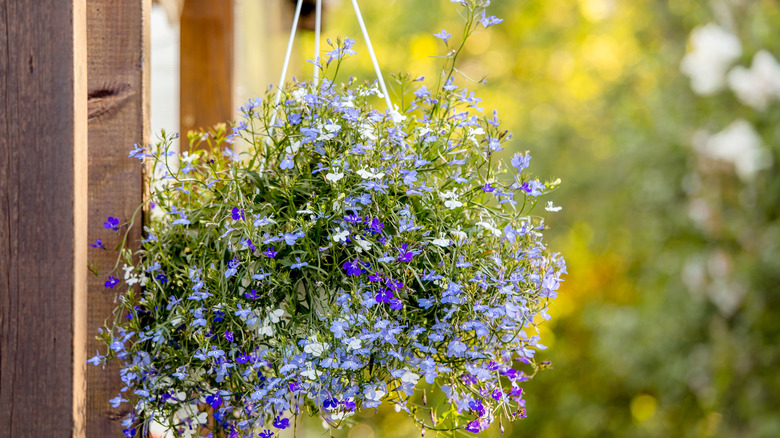
Trailing lobelias (Lobelia erinus), also known as edging lobelia, are a species within the lobelia genus that, as the name suggests, grow as trailers. They are typically grown as annuals but can also thrive perennially in USDA hardiness zones 10 through 11, via Missouri Botanical Garden.
The light blue or purple flowers are delicate, usually only growing half an inch in diameter. However, when grown as hardy flowers, they can grow up to 9 feet long. They prefer moist soils, full sun to part shade, fertilization twice a month, and bloom in late spring and early summer.
3. Wave petunia
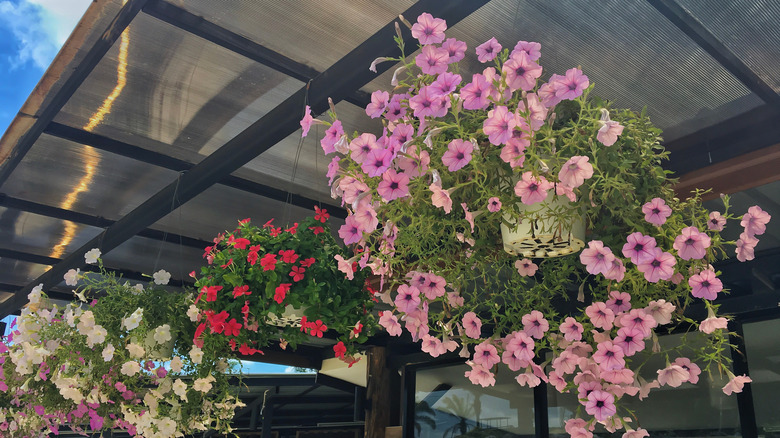
ajisai13/Shutterstock
Wave petunias (Petunia spp.) thrive in USDA growing zones 9 and 10 and are perfect for growing baskets. They are typically sold and grown as annuals, and start to bloom in spring through fall when temperatures reach a consistent minimum of 40 degrees Fahrenheit, says Joe Cappel’s Garden Center.
Wave petunias are easy to grow; they only require full sun, regular watering, and well-draining soils. When these conditions are met, they can reach 5 to 7 inches tall and 3 to 4 feet wide. Wave petunias are sensitive to overwatering, so let them dry out between waterings.
4. Baby blue eyes
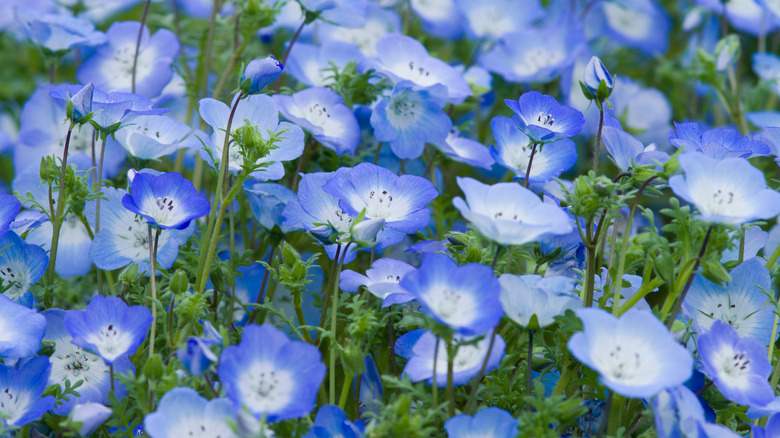
zzz555zzz/Shutterstock
Baby blue eyes (Nemophila menziesii) are a less common but stunning trailing flower that will look stunning displayed in a hanging basket. According to Gardenia, they are annuals, growing 1.5 inches in diameter, up to 6 inches long, and up to 12 inches wide, and thrive in USDA growing zones 2 to 11.
Baby blue eyes, depending on the location, bloom from late winter to early summer. They prefer full sun or part shade — hotter climates will benefit more from afternoon shade. Plant in well-draining but moist and fertile soil; water when dry or in long drought periods.
5. Million bells
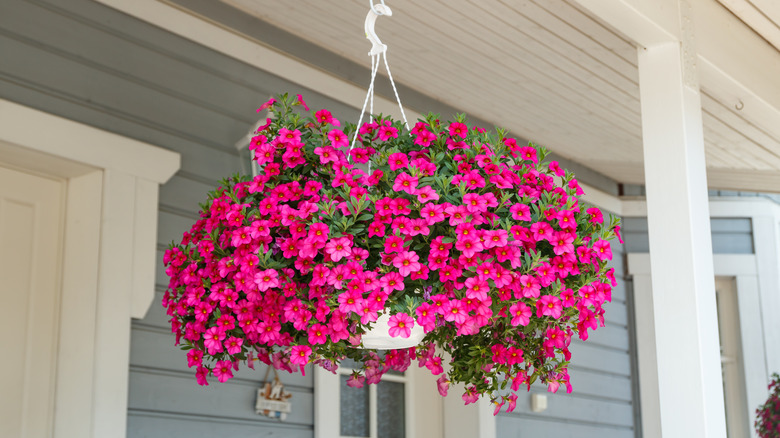
MinttuFin/Shutterstock
Million bells (Calibrachoa) are another trendy and hanging basket-appropriate flower. The University of Minnesota Extension notes that they’re often called trailing petunias due to how similar the two flowers look. These can be found in various colors: red, pink, blue, etc.
Calibrachoa loves the sun, requiring a minimum of eight hours daily. They begin blooming from spring to fall in temperatures above 55 degrees Fahrenheit. Calibrachoa grows in USDA zones 9 to 11, reaching 6 to 12 inches tall and 12 to 24 inches wide. It enjoys frequent watering, well-draining soils, and biweekly feeding with a blooming fertilizer.
6. Cup and saucer vine
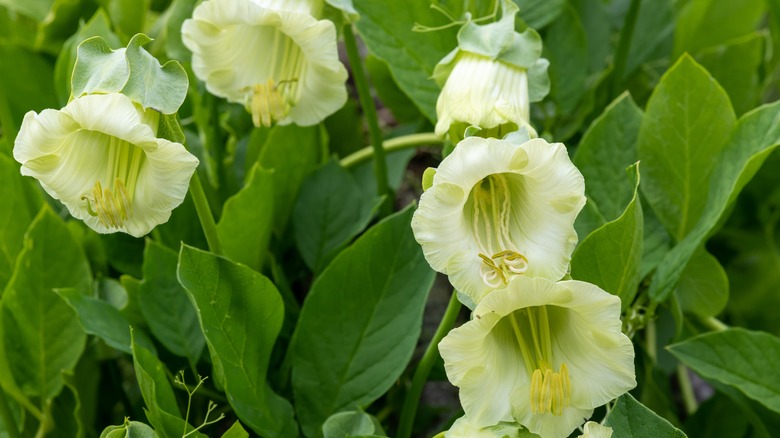
Tom Meaker/Shutterstock
Cup and saucer vines (Cobaea scandens) are an annual trailing flower native to Mexico, according to the Missouri Botanical Garden, that start off green, then fade to yellow, ending their blooming cycle with a deep purple color. They grow up to 20 feet long and 3 to 6 feet wide when grown as annuals and even longer in subtropical climates.
Cobaea scandens require full sun to thrive and produce blooms during late summer and fall. The fragrant, bell-shaped flowers should be planted in USDA growing zones 9 to 11 in moist, well-draining soils and watered somewhat frequently.
7. Creeping zinnia
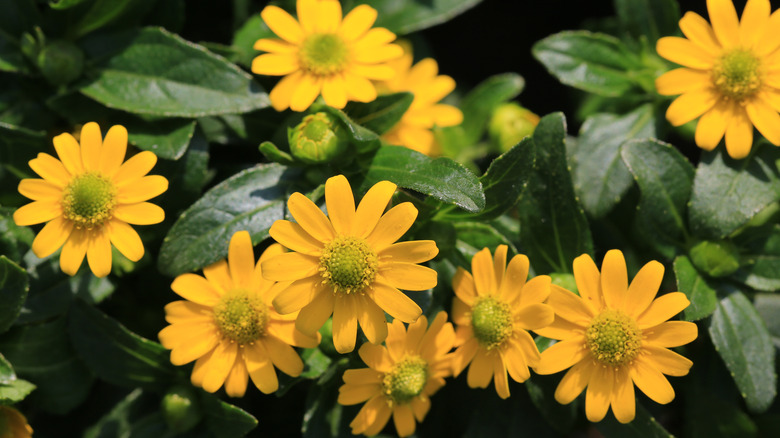
Traveller70/Shutterstock
Creeping zinnias (Sanvitalia procumbens) resemble black-eyed Susans, except these yellow flowers have bright green centers. These annuals are relatives of daisies and have very similarly shaped leaves; only creeping zinnias are much smaller at just 3/4 of an inch in diameter, via the NC State University Extension.
These flowers grow as long as 6 inches and as wide as 18 inches. They require full sun and prefer sandy, rich, and well-draining soils. Sanvitalia procumbens bloom in the summer, typically lasting through the first fall frost, and do exceptionally well in USDA growing zones 2 to 11.
8. Santa Cruz begonia
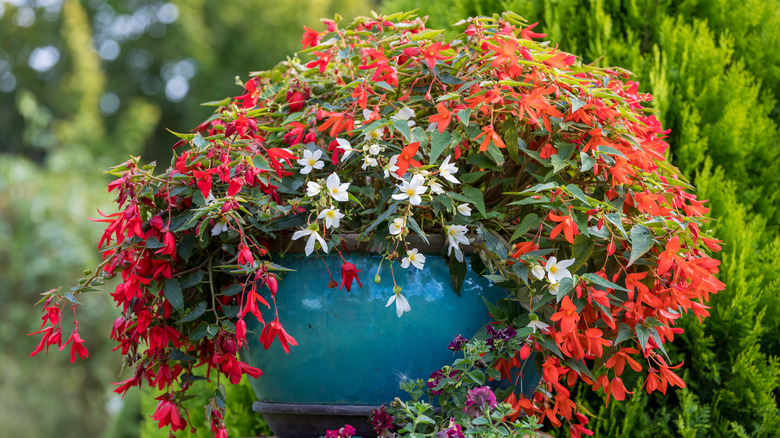
Artush/Shutterstock
Santa Cruz begonias (Begonia boliviensis) are a magnificent trailing species perfect for USDA growing zones 9 to 11. They are also commonly referred to as trailing begonias, per Gardenia, reaching 1 to 2 feet in height and width. The bright red flowers have long, star-shaped petals that point down as they trail.
Trailing begonias start flowering in the late spring and continuously bloom until the first frost. They prefer full sun but will survive in partial shade. Provide them a well-draining but moist and rich soil, and protect them from strong winds that could knock off flowers.
9. Nasturtium
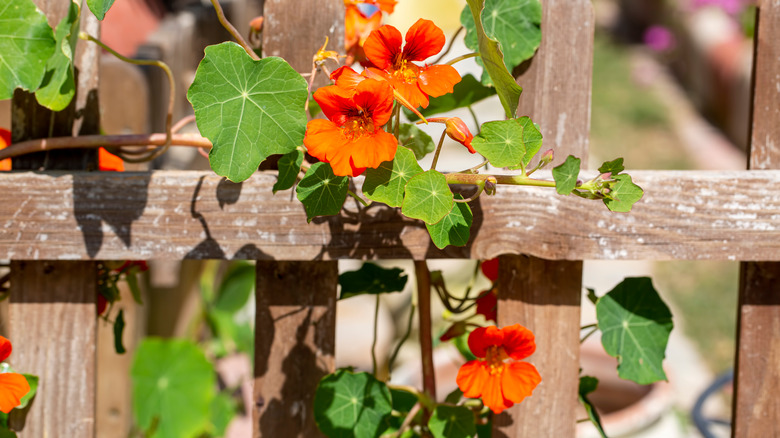
Esin Deniz/Shutterstock
Nasturtiums (Tropaeolum majus) are a bright orange annual flower that is relatively easy to grow, according to the Wisconsin Horticulture. Native to South and Central America, these flowers can grow about a foot long and up to 18 inches wide if provided with the right conditions.
When given full sun, nasturtiums will provide gorgeous and vibrant blooms from their first flower until the first frost. They are drought tolerant but require occasional watering when the soil is arid. Plant in USDA growing zones 9 through 11 in well-draining soil and deadhead throughout the season for the best blooms.
10. Blue star creeper
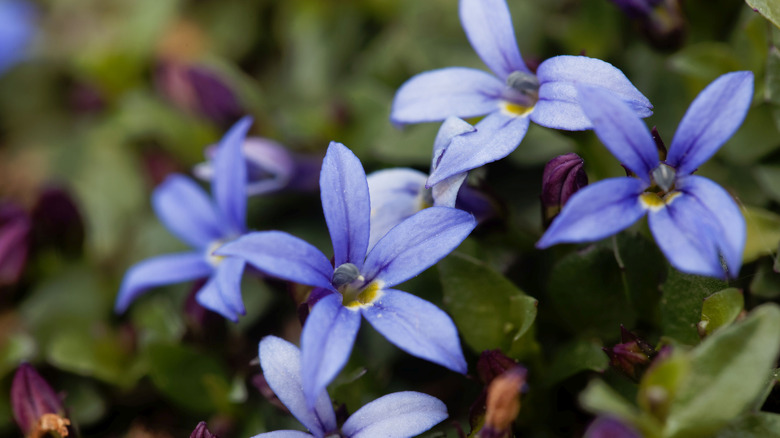
ChWeiss/Shutterstock
As the name would suggest, blue star creepers (Isotoma fluviatilis) are climbing or trailing blue flowers with star-shaped petals. The NC State University Extension notes they also make excellent ground covers. These are much hardier flowers than the others, growing perennially in USDA hardiness zones 6 through 8.
Also, unlike the previous flowers, they don’t require full sun and prefer dappled sun or partial shade, especially in the afternoon. Blue star creepers also like moist soil but not the saturated variety. They can grow up to 3 inches high and 18 inches wide, blooming in early summer to late spring.



